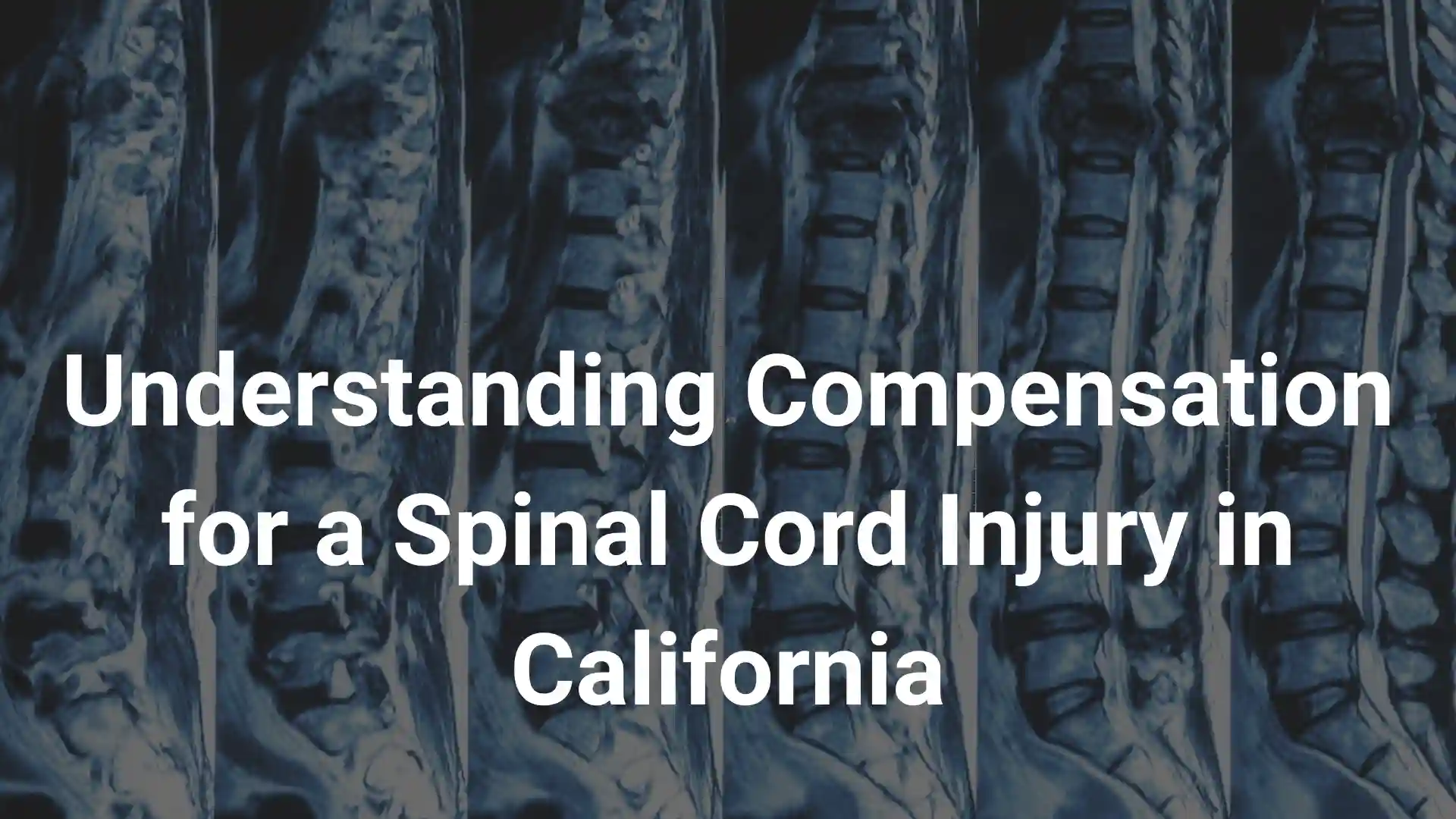
Spinal cord injuries change lives in an instant. These injuries affect nearly every aspect of daily life, from the physical toll they take on a body to the financial strain they take on a bank account. If you suffered a spinal cord injury in California that was caused by someone else, you could be entitled to compensation as calculated. Below, we explain what spinal cord injury compensation could include, what influences settlement amounts, and what steps to take next.
What Is Spinal Cord Injury Compensation?
Spinal cord injury and maximizing compensation refer to the money you can pursue after suffering a spinal injury caused by someone else’s negligence or misconduct. Legal help for spinal cord injury victims can make a significant difference, ensuring your rights are protected and that you receive the support and compensation you truly deserve. This includes accidents like car crashes, falls, or workplace incidents that result in spine damage.
Compensation often covers:
- Medical treatment and rehabilitation
- Ongoing care or in-home support
- Loss of income, including future earning potential
- Pain and suffering
- Emotional distress
- Mobility devices and home modifications
In severe cases, like quadriplegia or paraplegia, claims may also include money for a life care plan, which outlines future medical needs, spinal rehab costs, and mobility aid expenses. These claims aim to cover long-term or permanent losses caused by spinal cord trauma.
What Compensation Can You Claim for a Spinal Cord Injury?
Your specific losses will guide your spinal injury settlement. While every spinal cord injury case is different, most claims include some combination of the following:
Medical Expenses
Spinal cord injury medical expenses often comprise a significant portion of a compensation claim. They cover many necessary treatments, such as emergency room visits, surgeries, inpatient care, physical and occupational therapy, medication, and follow-up appointments. For individuals facing permanent disabilities, projected future care is also a key part of the compensation calculation.
Lost Income
When a spine injury prevents you from working, you can seek compensation for lost wages. If you can’t return to work, your claim may include lost future earnings. A strong case will show how the injury limits your career path and how that loss affects your long-term financial security.
Pain and Suffering
Back and neck injuries often come with chronic pain, loss of mobility, and reduced quality of life. Courts allow victims to recover pain and suffering and other intangible losses, in addition to medical expenses and income losses. These personal losses can be harder to calculate, but they are significant in most spinal cord claims.
Mobility and Home Modifications
Wheelchairs, lifts, custom vehicles, and home renovations are often necessary after a spine injury. These costs are part of spinal cord injury compensation, especially when the victim loses independence because of the injury.
Together, these categories form the foundation of most spinal cord injury claims, helping ensure that victims are compensated for both immediate hardships and the lasting impact on their daily lives.
Please read more about personal injury cases here: Personal Injury Cases: Do You Have a Claim?
What Affects the Amount of Compensation?
Spinal injury settlement amounts vary widely. While some people receive six figures, others may recover millions. Key factors include:
Severity of Injury
A complete spinal cord injury that results in paralysis will likely bring a higher paraplegia injury compensation amount than a mild or partial injury—the more serious the trauma, the more costly the care, the greater the personal, intangible losses, and the larger the claim.
Medical Costs and Life Care Needs
If you need lifelong treatment, mobility aids, or in-home assistance, these costs can be projected over decades. A carefully documented life care plan compensation claim can increase the total value of your case.
Age and Occupation
Younger individuals with long career paths ahead of them may have larger lost income amounts in their spinal injury claims. Likewise, a highly skilled worker with a high income before the accident may receive more compensation than someone who didn’t earn as much pre-injury.
Liability and Proof
You must show that someone else was at fault to recover compensation. That might be a distracted driver, a negligent property owner, or the manufacturer of a defective product. If liability is clear and supported with evidence, the claim tends to settle faster.
Insurance Coverage
Even if your claim is strong, available insurance companies’ limits may cap what you can recover. If the responsible party has limited coverage and few personal assets, your lawyer may seek additional potentially at-fault parties or legal routes to seek the full amount of compensation you’re owed.
All these factors work together to shape the potential value of your spinal injury settlement, making it essential to build a well-supported claim that reflects the full scope of your losses.
When Compensation Includes More Than Just Money
It’s easy to think of back injury compensation as financial only. But the real goal is quality of life. A fair payout can allow you to afford physical therapy, stay in your home, maintain relationships, and regain some independence.
For many, recovery isn’t about going back to how life was before—it’s about building a new version of it. That’s why spinal cord trauma compensation needs to reflect both current and future challenges.
Please read more about wrongful death compensation here: Understanding Wrongful Death Compensation in California
How to Start a Spinal Cord Injury Claim in California

- Medical Documentation – Collect every medical record and bill related to the injury.
- Evidence of Fault – Photos, accident reports, and witness statements can support your case.
- Estimate of Losses – Use expert testimony and tools like an injury compensation calculator to estimate costs.
- Legal Representation – Hiring a knowledgeable attorney can help guide your spinal cord claim process and avoid low settlement offers.
Each step plays a critical role in building a strong case, and the more thorough your preparation, the better your chances of securing fair compensation for your spinal cord injury.
How Long Do You Have to File?
In California, you generally have two years from the accident date to file a claim. If the injury involves a government agency, this deadline can shrink to six months. Don’t wait. Time matters, especially when dealing with complex spine damage accident claims.
Speak with a Spinal Injury Attorney in Huntington Beach
Every spinal injury case is different. Whether you’re dealing with mild nerve damage or full paralysis, you deserve support, guidance, and clarity. Let the California spinal injury lawyers of DJA Injury Attorneys review your situation and explain your legal options. Our team is here to help you understand your rights and take the first step toward securing the necessary benefits. Call (949) 229-7228 or send us a message to schedule a consultation.
Related Post
Maximizing Your Personal Injury Insurance Claim in California
